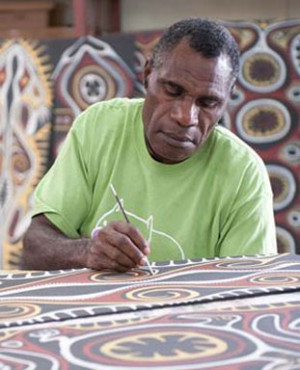
Port Moresby – The East Sepik province is home to the Kwoma people, whose homes are located in the Waskuk Hills. Its warm and humid climate is one of the many distinct features of Papua New Guinea that closely affects the lives of the Kwoma people.
This particular group is divided into two dialect areas, namely, the Kwoma dialect spoken in the hills and the Nukuma dialect in the lowlands. There are some linguistic distinctions within these divisions as well. In particular, Kwoma is closely related to Kwanga, which is commonly used by a greater number of people in the southern foothills of the Torricelli Mountains. Nevertheless, this distinction does not entirely separate the ethnic group, as they still share other significant cultural traditions and practices.
Origin of the Kwoma
There is a dearth of readily available resources about the history or the specific details on these Papua New Guinea residents. However, based on research, the Kwoma traces their origin to various settlements or what others may call “holes” in the ground across the Nukuma territory. When ethnographers began learning more about the group in the late 1930s, there were only roughly a thousand of them. Nowadays, there are over 4,000 people across the region.
Researchers learned that in the most recent century, the Kwoma people migrated from the Torricelli Mountains and to their current locations. They were under German control just before World War I. However, the people only felt the impact of the European presence after World War II, when various Christian missions began to spread across the lands. A big portion of the Kwoma then chose to follow one of the various Christian denominations.
Dialect Differences and Beliefs
Even though the Kwoma people share particular customs and history, the dialect division has been the constant point of contention throughout the years. This is rooted in the people’s desire to have their own translations within their own particular dialect.
Almost 99% of the Kwoma people are now Christians. Thus, they read and follow the teachings of the Bible. The Kwoma translation of the New Testament was completed in 1975. With this leap in the availability of local translations, most of the Bibles are already in the Kwoma dialect. However, the Nukuma also want to have their own translation, particularly that of the New Testament. They have persistently requested for a revision and translation so that they can read the Bible in their native tongue.
Local Dialect and Pidgin
Despite the differences between the dialects, the Kwoma people have a particular custom when communicating with people within their communities and with outsiders. The people speak their own native language among themselves, while they use the New Guinea pidgin with outsiders.
The people choose to use the pidgin or a simplified form of their language to easily connect and communicate with people who are not familiar with their local dialects. In addition, this is a way to bridge the communication gap, as only a few of them are able to speak English to communicate with foreign guests, travelers, and even researchers.
Image from Qagoma, http://blog.qagoma.qld.gov.au/



